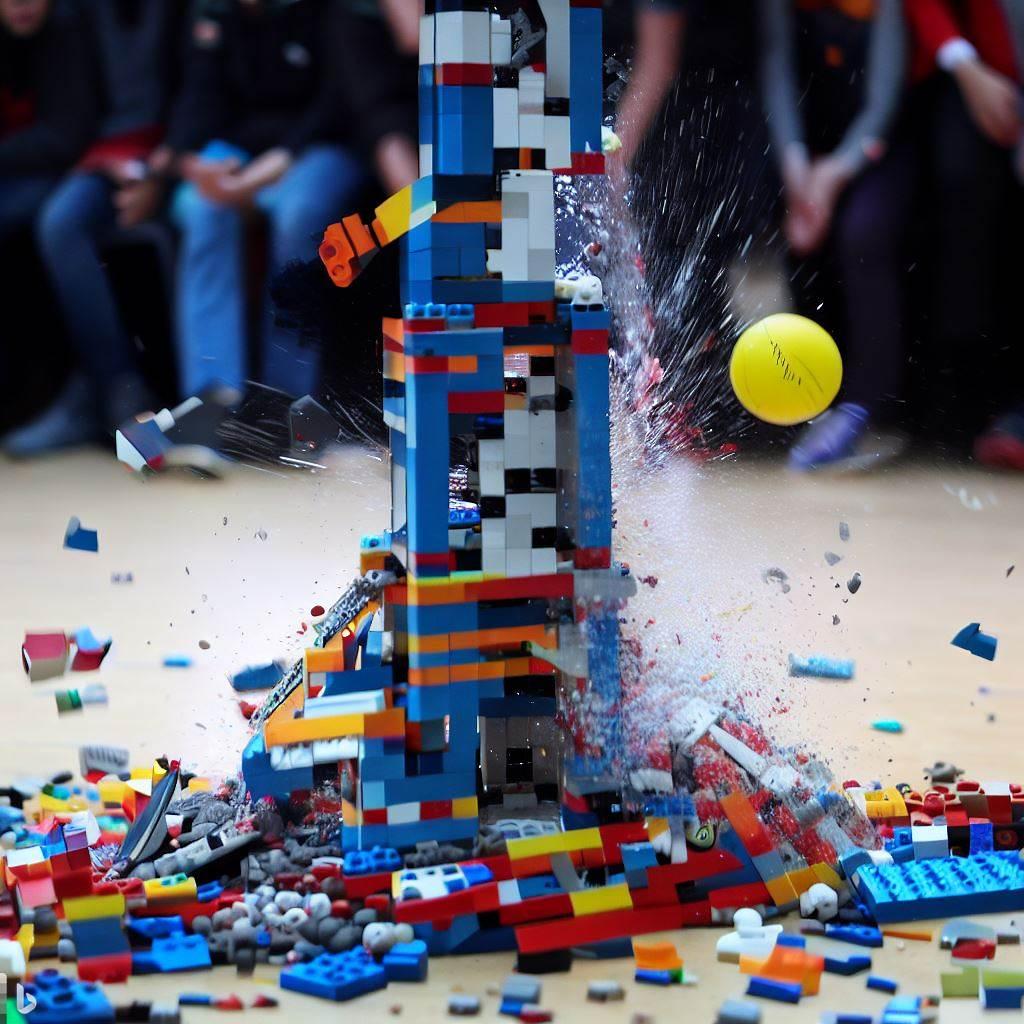In the realm of professional development and team building, certain activities transcend age and industry, and the challenge of building the highest Tower out of Bricks is no exception. Managers, like children, face a unique set of obstacles and opportunities in this classic activity. It demands creativity, strategic thinking, and effective leadership to construct a stable and towering structure. Let’s delve into the managerial challenge of building the highest block tower and explore how this activity fosters essential skills for successful leadership and teamwork. An exercise for senior management to build the highest building brick tower.
What is the objective of this exercise?
In the managerial version of building the highest tower out of bricks, participants are provided with a set of simple building blocks, representing the resources and talents at their disposal. The objective is to collaboratively stack these blocks to create the tallest tower possible without using external support or adhesives. The tower must remain standing for a specified period to be considered a successful accomplishment.
How to facilitate the highest Tower out of Bricks activity
Each team will need an equal number of building blocks in various sizes and colors.
Instructions
- Divide the senior management team into smaller groups of 3-5 people.
- Provide each group with an equal number of building blocks.
- Explain that the goal of the exercise is to build the highest tower possible using only the building blocks provided.
- Set a time limit of 30 minutes for the exercise.
- After 30 minutes, measure the height of each group’s tower.
- The group with the tallest tower wins the exercise.
Rules
- The tower can only be built using the pieces provided.
- The tower must be free-standing, without any support or attachment to the table or any other surface.
- The tower must remain standing for at least 10 seconds after the time limit has expired.
- Groups are not allowed to trade or share their pieces with other groups.
Tips
- Encourage each group to assign roles and responsibilities, such as a team leader, builder, and quality checker, to ensure efficient and effective teamwork.
- Encourage open communication and collaboration among team members.
- Encourage the use of creative problem-solving and critical thinking to overcome any challenges that may arise during the exercise.

Skills Developed Through the Challenge
This seemingly lighthearted team-building exercise imparts critical managerial skills that contribute to a manager’s overall effectiveness:
- Creative Problem-Solving: Just like in the workplace, managers must navigate challenges and make critical decisions. Constructing a stable tower requires analyzing problems, brainstorming solutions, and implementing the most effective strategy.
- Resource Management: Participants must manage their resources thoughtfully, just as managers allocate budgets, time, and human resources to achieve organizational goals.
- Strategic Thinking: The quest to build the tallest tower demands a well-thought-out plan. Managers learn to envision the end goal and create a step-by-step strategy to accomplish it.
- Decision-making Under Pressure: As the tower grows taller, the stakes rise, simulating the pressure managers often face when making important decisions.
- Communication and Collaboration: To succeed in this challenge, effective communication and collaboration among team members are crucial. Managers enhance their ability to convey ideas clearly and work seamlessly with their team.
Engineering Concepts in Management
Surprisingly, this seemingly playful activity draws parallels with managerial principles and engineering concepts:
- Balance and Stability: Just like a tower’s stability depends on balancing the blocks, successful management requires finding equilibrium among competing priorities.
- Team Dynamics: Managers witness firsthand how the dynamics within a team influence the tower’s construction. This mirrors the impact of team dynamics on a project’s success in the workplace.
- Adaptability and Iterative Improvement: Managers, like tower builders, must adapt to changing circumstances and continuously improve their strategies for optimal results.
- Risk Management: Building a tall tower inherently carries risks, and managers must embrace risk management in their decision-making to mitigate potential failures.
The Competitive Edge
In the managerial challenge of building the tallest tower out of bricks, friendly competition can elevate the experience. Managers strive to outperform their peers, driving innovation and testing unconventional approaches to secure the title of the tallest tower.
Debrief
Here are some debriefing questions to ask the participants after the highest tower out of bricks challenge is completed:
- Discuss the different strategies used by each group to build their tower.
- Talk about the importance of teamwork and communication in achieving the common goal.
- Discuss the importance of creativity, critical thinking, and problem-solving in achieving success.
- Ask the group to reflect on how they can apply the lessons learned in the exercise to their daily work.

Conclusion
The challenge of building the tallest block tower transcends its roots as a children’s game and emerges as a powerful tool for managerial development. As managers engage in this team-building exercise, they sharpen their problem-solving abilities, practice resource management, and hone their strategic thinking skills. By embracing engineering concepts and competition, managers gain valuable insights into team dynamics, adaptability, and risk management – all vital elements for successful leadership in the corporate world. So, the next time you encounter a set of building blocks, seize the opportunity to foster teamwork, camaraderie, and managerial excellence – one block at a time. Happy building!


